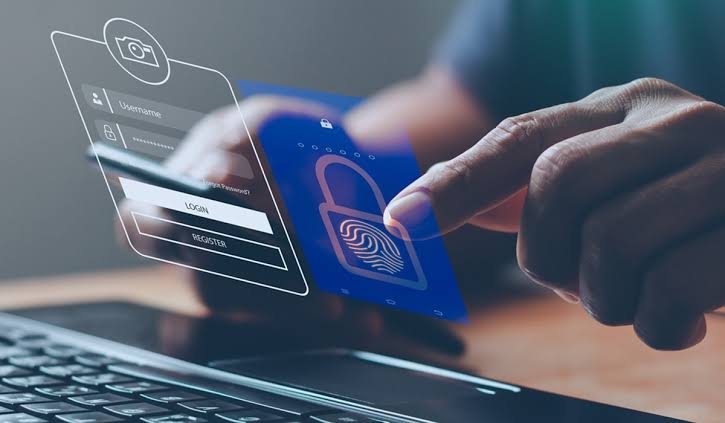Biometric technology has become a cornerstone of modern security systems, offering advanced methods for verifying identity and safeguarding sensitive information. Unlike traditional security measures such as passwords or access cards, biometric systems rely on unique physical or behavioral traits, such as fingerprints, facial recognition, iris scans, or voice patterns. These traits are difficult to replicate, making biometric technology a highly reliable and efficient solution for both personal and organizational security.
In 2025, the adoption of biometric security has expanded across industries ranging from finance and healthcare to government and consumer electronics. With rising concerns over cyberattacks and data breaches, businesses and individuals are increasingly turning to biometric authentication to enhance protection against unauthorized access. As technology advances, the role of biometrics in security systems continues to grow, offering both opportunities and challenges.
Understanding Biometric Technology
Biometric technology is based on the principle that every individual has unique biological characteristics that can be used for identification. Common biometric modalities include:
- Fingerprint recognition – Widely used in smartphones, banking systems, and law enforcement.
- Facial recognition – Employed in airports, surveillance systems, and secure facility access.
- Iris and retina scans – Known for their high accuracy and often used in high-security environments.
- Voice recognition – Common in customer service authentication and smart devices.
- Behavioral biometrics – Based on patterns such as typing speed or mouse movements.
These systems work by capturing a digital template of the trait, storing it securely, and comparing it during authentication processes.
Advantages of Biometric Security Systems
Biometric security offers several benefits over traditional security methods. One of the main advantages is convenience. Unlike passwords or access cards, which can be forgotten or stolen, biometric traits are always with the user. This makes authentication faster and simpler.
Another key advantage is enhanced security. Biometric identifiers are extremely difficult to forge or replicate, reducing the risk of identity theft and unauthorized access. In industries such as banking and healthcare, biometrics provide an additional layer of protection for sensitive data and transactions.
Biometric systems also reduce dependency on passwords, which are often a weak link in cybersecurity due to poor user practices like reusing or sharing them. By integrating biometrics, organizations can significantly strengthen their security infrastructure.
Biometric Technology in Everyday Life
The use of biometrics has become increasingly common in daily life. Smartphones equipped with fingerprint sensors or facial recognition have made secure unlocking easy and fast. Payment systems such as Apple Pay and Google Pay now use biometric verification to authorize transactions, offering both security and convenience.
In the travel sector, airports around the world are adopting biometric boarding systems to speed up passenger processing while maintaining strict security standards. Similarly, workplaces use biometric access systems to monitor entry and enhance workplace security.
Challenges and Privacy Concerns
Despite its benefits, biometric technology raises important challenges, particularly regarding privacy and data protection. Biometric data, unlike passwords, cannot be changed if compromised. A stolen fingerprint or facial template poses long-term security risks.
Data storage and transmission are also critical concerns. If biometric databases are hacked, the consequences can be severe, as attackers could use this information for identity theft or surveillance. As a result, organizations must ensure that biometric data is encrypted and stored securely, often using decentralized or on-device solutions.
There are also ethical concerns surrounding facial recognition, particularly when used for mass surveillance. Critics argue that without strict regulations, biometric technologies could infringe on privacy rights and civil liberties.
Integration with AI and Advanced Security
The integration of artificial intelligence (AI) with biometric systems has significantly enhanced their accuracy and performance. AI-powered algorithms can analyze biometric data with remarkable speed and precision, reducing errors and false rejections.
In security systems, AI-driven facial recognition can detect anomalies or suspicious behavior in real time, adding another layer of safety. Predictive analytics, combined with biometric authentication, is now being used to identify potential threats before they occur, making security systems smarter and more proactive.
The Future of Biometric Security
As technology evolves, biometric security systems are expected to become even more sophisticated and widespread. Innovations such as multimodal biometrics, which combine multiple traits like fingerprints and facial scans, will enhance reliability and reduce the chances of fraud.
Biometric wearables and advanced sensors are also emerging, allowing seamless authentication for various applications. Moreover, the integration of blockchain with biometrics is being explored to create secure, decentralized systems for data storage and verification.
Regulatory frameworks are likely to play a crucial role in the future of biometrics, ensuring that these technologies are used ethically and responsibly. With proper safeguards, biometric systems will continue to reshape the landscape of security.
Conclusion
Biometric technology is transforming the way individuals and organizations approach security. By leveraging unique human traits, it provides a level of protection that is both convenient and difficult to breach. However, with its growing adoption, there is a need for robust privacy measures, data encryption, and ethical considerations to prevent misuse.
As we move into an era of digital transformation, biometric systems will remain at the forefront of security innovation. With ongoing advancements in AI and other technologies, biometrics promises to deliver even stronger, smarter, and more seamless security solutions in the years to come.




Cool